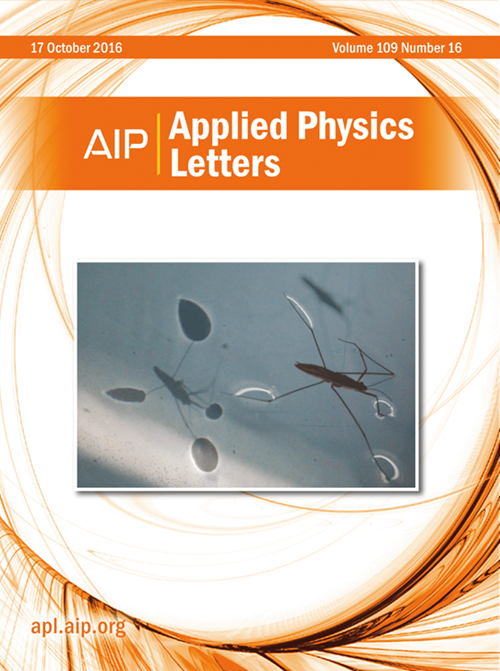Heterostructure-induced modulation of optical anisotropy in ReSe2
IF 3.5
2区 物理与天体物理
Q2 PHYSICS, APPLIED
引用次数: 0
Abstract
The precise identification of the optical anisotropy principal axis and the controlled modulation of optical anisotropy in low-dimensional semiconductor materials are critical for advancing polarization optoelectronic devices. This paper introduces an enhanced reflectance difference spectroscopy imaging technique that can simultaneously determine the optical anisotropy principal axis of ReSe2 across a range of thicknesses, from monolayers to bulk forms. Additionally, it presents a method for modulating the optical anisotropy principal axis of strongly anisotropic materials by overlaying them with isotropic materials via mechanical exfoliation, thereby creating van der Waals heterostructures. Overall, this research not only establishes a straightforward and practical optical technique for accurately identifying the optical anisotropy principal axis but also offers a viable strategy for controlling optical anisotropy.异质结构诱导的 ReSe2 光学各向异性调制
本文章由计算机程序翻译,如有差异,请以英文原文为准。
求助全文
约1分钟内获得全文
求助全文
来源期刊

Applied Physics Letters
物理-物理:应用
CiteScore
6.40
自引率
10.00%
发文量
1821
审稿时长
1.6 months
期刊介绍:
Applied Physics Letters (APL) features concise, up-to-date reports on significant new findings in applied physics. Emphasizing rapid dissemination of key data and new physical insights, APL offers prompt publication of new experimental and theoretical papers reporting applications of physics phenomena to all branches of science, engineering, and modern technology.
In addition to regular articles, the journal also publishes invited Fast Track, Perspectives, and in-depth Editorials which report on cutting-edge areas in applied physics.
APL Perspectives are forward-looking invited letters which highlight recent developments or discoveries. Emphasis is placed on very recent developments, potentially disruptive technologies, open questions and possible solutions. They also include a mini-roadmap detailing where the community should direct efforts in order for the phenomena to be viable for application and the challenges associated with meeting that performance threshold. Perspectives are characterized by personal viewpoints and opinions of recognized experts in the field.
Fast Track articles are invited original research articles that report results that are particularly novel and important or provide a significant advancement in an emerging field. Because of the urgency and scientific importance of the work, the peer review process is accelerated. If, during the review process, it becomes apparent that the paper does not meet the Fast Track criterion, it is returned to a normal track.
 求助内容:
求助内容: 应助结果提醒方式:
应助结果提醒方式:


